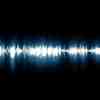
When you’re just starting out, part of that means getting great sound in the field…and mixing it in post…all by your lonesome. May seem scary, especially if you know nothing about sound. Guess what? Time to learn!
Here’s a few of my favorite resources for getting started in the audio side of moving picture production:
My Favorite Web Resources:
Microphone Guide
Great basic description of the different mics you’ll need to choose from to get the job done.
Sound Basics and Recording Techniques
While slightly dry, this article, which is part of a curriculum for the Bay Area Video Coalition, is a great place to start if you want to know the difference between a lav, a boom, an on camera mic, and when it’s appropriate to use each. Also goes a bit into the science of sound. Worth reading.
Audio Advice: Videotaping Conversations
Nice article on techniques for recording conversations.
Lavalier Lessons
Whether you use an expensive wireless mic, or a more affordable wired option, these techniques will help you properly mic your talent when using a lavalier.
How to Record High Quality Audio for Film and TV
Working with a boom pole. This method will likely work better for your scripted material than reality project, but this is good material to understand. FYI, on our large reality shows, we always use both lavs and booms to get the field audio.
A Crash Course in Sound Mixing
A terrific two-part article, A Crash Course in Sound Mixing Part 1 and Part 2 provide a great overview of the sound mixing process, along with some helpful tips.
Final Cut Pro 4 Audio Essentials
Final Cut Pro 4? What? Isn’t that ancient? Well, the article is from 2003, but certainly classifies as an “oldie but a goodie.” Even if you don’t use Final Cut Pro, the principles explained transcend the software, and it’s a great read. It even starts with field recording techniques. Sure, some of the info is out of date, but what an in-depth article! Have a look.
My Favorite Books
There’s only two books you need. Seriously. Both are by Jay Rose, sound man extraordinaire. There IS some overlap between these two books, but I own both, and love them. They sit next to my bay, and I literally consult at least one of them on everything I mix.
Producing Great Sound for Film and Video
Producing Great Sound for Film and Video
was the first book I ever bought on getting sound. I felt like a genius after reading it. I used its advice on many of our own projects. Of the two, this book focuses more on getting sound in the field, although it does have lots of practical post-production advice as well.
Audio Postproduction for Film and Video
Audio Postproduction for Film and Video
is Jay’s second book, and delves much further into sound post issues like mixing and mastering. Again, there IS some overlap with Jay’s first book, but I’ve never minded having both.
Start Recording and Mixing Audio
The first few times you try to capture or mix audio on your own, you will make mistakes. Just like anything else, it’s going to take some practice. When you’re big and successful, you’ll hire the best sound men in the business. In the mean time, become the best sound man or sound woman you can.
What are your favorite web resources of books on sound recording and mixing? Leave a comment and let us know!